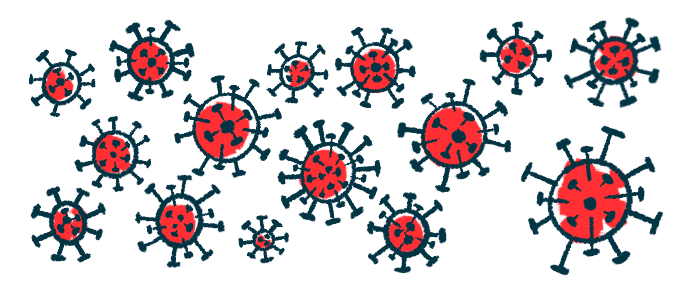Pseudomonas bacteria in CF lungs raise risk of failure after transplant
Study compares lung microbiome of transplant patients with various diseases
Written by |

The abundance of Pseudomonas bacteria and related virulence factors in the lungs of people with cystic fibrosis (CF) after a transplant may raise their risk of a progressive decline in lung function and organ rejection, according to a recent study.
Virulence is the ability of a microorganism to cause disease.
CF transplant patients had a significantly higher abundance of Pseudomonas in fluid samples from their lungs than did people with other chronic lung diseases — including chronic obstructive pulmonary disease (COPD), pulmonary fibrosis, and alpha-1 antitrypsin deficiency — who also underwent a lung transplant.
“These findings shed light on disease-specific microbial and metabolic signatures in [lung transplant] recipients, offering valuable insights into the underlying causes of [transplant] rejection,” the researchers wrote.
Organ decline, or chronic lung allograft dysfunction, can follow a transplant
The study, “Microbiome and metabolome patterns after lung transplantation reflect underlying disease and chronic lung allograft dysfunction,” was published in the journal Microbiome.
Respiratory symptoms of CF, from infections and inflammation to tissue damage, are due to the accumulation of thick and sticky mucus in the lungs that contributes to a progressive decline in lung health. In severe cases, a lung transplant can be a life-saving treatment option.
However, about half of all lung transplant patients experience chronic lung allograft dysfunction (CLAD) five years after their surgery, the researchers wrote. CLAD is characterized by progressive lung function decline and, with lung infections — influenced by the composition of the lung microbiome — is a factor in long-term survival. The microbiome refers to the trillions of bacteria and other microscopic organisms living in the human body.
Researchers at Michigan State University and the University of Minnesota explored the relationship between the lung microbiome and the development of CLAD in 195 adults with chronic lung diseases who underwent a lung transplant at the Minnesota school’s hospital between 2002 and 2012.
They analyzed the lung’s microbiome composition in 856 bronchoalveolar lavage fluid (BALF) samples — obtained by rinsing the lungs with a saline solution — collected from this group.
Among the total patients, 47 had CF, 78 had COPD, 47 had pulmonary fibrosis, and 23 had AATD. Those with CF had a mean age of 36 years at the time of their transplant, and most (70%) were positive for Pseudomonas bacteria, a common cause of lung infections in CF. More than half of this group, 55% or 26 people, were diagnosed with CLAD.
Significantly higher levels of Pseudomonas bacteria seen in lungs of CF patients
Significant differences in the lung’s microbiome composition were seen, with CF patients showing a distinct profile compared with other groups. The main characteristic of the CF microbiome was a significantly higher abundance of Pseudomonas, and a lower number of Streptococcus, Veillonella, Prevotella, and Actinomyces bacteria.
Accordingly, CF patients had significantly higher levels of Pseudomonas small molecule virulence factors relative to the other diseases, “matching the Pseudomonas trend in the microbiome data,” the scientists wrote.
“In summary, these data show that underlying CF disease is associated with a unique BALF microbiome after [a lung transplant], driven predominately by the higher abundance of Pseudomonas,” they added.
Comparisons of the microbiome in people who developed CLAD and those who didn’t found a higher abundance of Pseudomonas virulence molecules with CF, as assessed by analyzing the metabolome — the set of small molecule products of metabolism found in a sample. However, the abundance of Pseudomonas bacteria was not associated with developing CLAD.
CF patients with CLAD also had higher relative levels of Streptococcus and Prevotella, the researchers noted.
BALF samples collected before CFTR modulators in widespread use
Further analysis revealed that the abundance of Pseudomonas and its virulence molecules, although higher in the CF group, did not change over time following lung transplant in any of the underlying diseases.
“The role of Pseudomonas in [transplant] dysfunction and rejection is well established, and this study further implicates this organism and its [small molecule virulence factors] as potentially harmful” to lung transplant patients, “especially those with CF,” the researchers wrote.
As a study limitation, the researchers noted that its samples were collected before CFTR modulators, which treat CF’s underlying cause, were in widespread use. The first of these disease-modifying therapies, Kalydeco (ivacaftor), was approved in the U.S. in January 2012.







